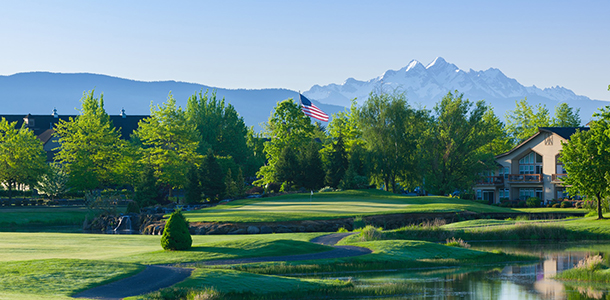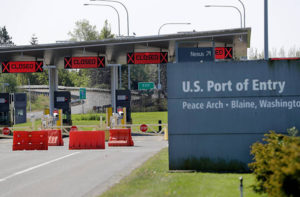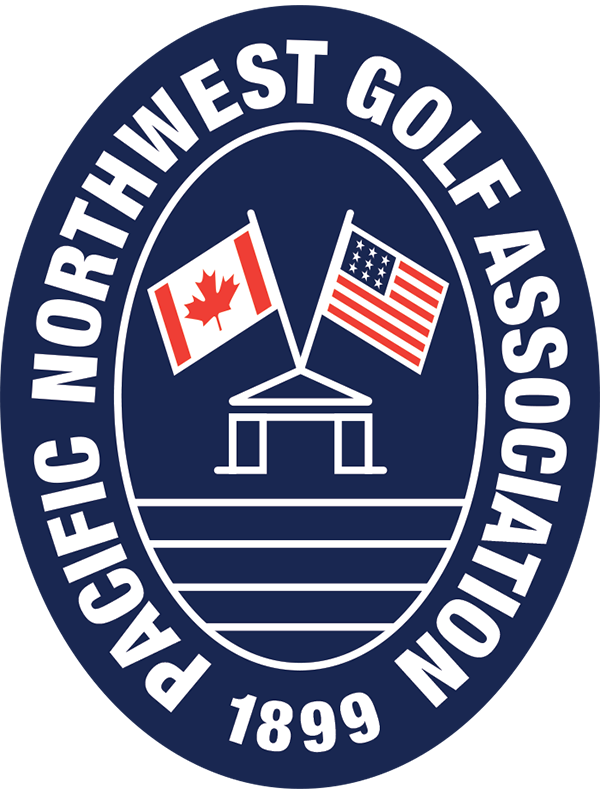Border closure creates tough path for Northwest courses
by John Tipping
Obviously this isn’t your typical golf season.
In most states and provinces, golf closed down for over 40 days, in what just happened to be a mild-weather spring. Restrictions on protocols and safety procedures added a twist never-before experienced in our lifetimes.
Regardless of all that, we’ve all done our best to make it normal, especially where golf is concerned.
And rounds are up at most Northwest courses, even as other revenue streams like food and beverage, special occasion (weddings and parties), and pro shop spending may be off a bit.
But there is a corner of the Northwest struggling to keep up, and it’s all about geography.
The U.S.-Canadian border is still closed. For courses near the border – on both sides of the border – that depend on those border-crossing golfers, it’s like half of the golfers decided to leave their clubs in the garage this season.

In the Northwest corner of Washington, courses such as Sudden Valley, North Bellingham, Shuksan, Homestead Farms, Cedars at Dungeness and Loomis Trail have all been impacted. Among many other courses are Chewelah (Wash.) G&CC, The Idaho Club in Sandpoint and The Wilderness Club in Montana.
Even Semiahmoo in Blaine, Wash., now private, has been impacted by the border closure, as 50 percent of its members are Canadian and many have second homes on property.
“It’s been hard not seeing all of our customers and members from Canada,” said Josh Williams, general manager at Loomis Trail. “Loomis has always been a second home to many golfers from B.C. Historically, Canada has been around 65 percent of our business.
About 10 miles west of Loomis Trail, Homestead Farms in Lynden has a similar story.
“About 70 percent of our rounds are typically played by Canadians,” said Mick O’Bryan, general manager at Homestead Farms. “It has forced us to get creative to attract more local play or play from the south. And that has increased, but as recently as a month ago we were lucky to get 25-30 rounds a day.”
Brian Kruhlak, general manager at Sudden Valley in Bellingham, can certainly identify with the challenge, and knows that he is geographically placed better than some.
“I consider us to be smack dab in the middle of the courses getting crushed by border closure, and the ones thriving due to golf being one of the only activities available,” Kruhlak said. “We are basically flat with respect to rounds played from 2019, which was our best year ever, so I feel very fortunate for that.”
That said, it has taken a personal toll on Kruhlak, as about 10 percent of Sudden Valley members are Canadian, as is Kruhlak himself.

“I am gutted for them not being able to access their property and the relationships they have here with their American friends and family,” Kruhlak says. “Thirty-five years ago, when I first came to Sudden Valley, membership and public play dynamic was exact opposite with 90 percent of member and public play being Canadian. If that were the ratio today, we would be devastated.”
It’s a different picture for those courses on the north side of the border. Peace Portal Golf Course and Hazelmere Golf and Tennis Club in Surrey are the closest courses to the border. Not only have they not experienced the downturn, they have had Canadian residents return to playing these courses on a regular basis instead of traveling south. Even though close to the border, they are still close enough to the major metropolitan area of Vancouver.
What has been affected in Canada is the destination golf properties. Without international travel, and with cross-provincial travel also off the table, these destinations have had to exist exclusively off of British Columbia residents.
Without a doubt, the course experiencing the toughest time is Bald Eagle Golf Club at Point Roberts, Wash., which is closed until further notice. If you are not familiar with Point Roberts proper, it’s a sliver of land off the tip of the lower mainland of British Columbia. Technically in the United States, in order to access the area from Washington state you have to cross the Canadian border, then cross back through another U.S. border checkpoint.

So with all this lack of border travel, the Washington clubs have had to get creative and reach to the south to gain additional players. All of the courses have created specials and rate programs that are designed to draw more play from the Greater Puget Sound area.
The courses are less crowded so tee times are easier to get. The courses are played less so conditioning is at high levels.
One thing all the courses have in common is their taking serious the protocols and safety procedures for any golfer who ventures out, or those who go even further and take advantage of any of their stay-and-play packages.
If there has been a silver lining to all the uncertainty that the pandemic has caused, it’s been the influx of new golfers, something the game has been desperate to find.
“We have seen people out here we haven’t before,” O’Bryan said. “Girls and ladies lessons are way up. Youth camps have been packed, and we have adjusted our options to fit those new folks. We have a program for youth under 18 years old where they play free with a paying adult, or on their own $5 for nine holes, $10 for 18 holes, and anyone home from college can play for $1 per hole.”
Nobody is sure when the border will reopen. Rumors pop up all the time. Border Patrol agents are golfers too, and they play these courses. But even they don’t know the future.
But one thing is for sure, when the border does open, the greater Northwest golf community – its courses, the PGA pros, the staff, the greens crew – will be ready and willing to make sure everyone feels welcome.
(This article previously appeared in Pacific Northwest Golfer magazine, published by the PNGA.)
John Tipping founded Golf Northwest magazine, a precursor of the Golf Washington section of the PNGA’s magazine; and co-owned the Seattle and Vancouver golf shows for more than a decade.






